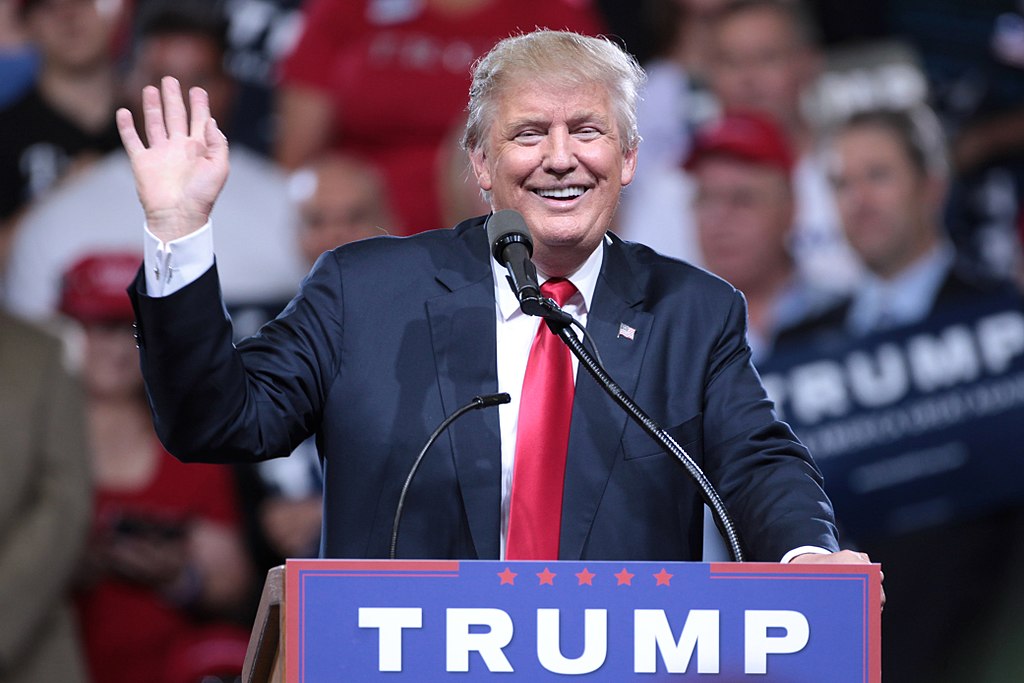President Donald Trump’s strategies to address income inequality in 2025 are drawing mixed reactions from economists, policymakers, and the public. While his administration has introduced initiatives aimed at promoting job growth and incentivizing domestic investment, critics argue these policies disproportionately benefit the wealthiest Americans and fail to tackle systemic inequities.
Trump’s economic agenda heavily emphasizes tax reforms, deregulation, and workforce development. Central to his strategy is the expansion of opportunity zones, a program that offers tax breaks to encourage investment in economically disadvantaged areas. Proponents say this could stimulate job creation and infrastructure improvements in struggling communities. However, detractors claim the program lacks safeguards to ensure it benefits residents rather than wealthy investors.
Additionally, the administration has highlighted efforts to promote vocational training and apprenticeships, aiming to upskill workers for high-demand sectors. While these initiatives have garnered some bipartisan support, questions remain about their effectiveness in narrowing the widening wealth gap.
Mixed Economic Results in 2025
The U.S. economy in 2025 has seen robust job growth, with unemployment remaining at a historic low of 3.6%. Wage growth has also picked up slightly, particularly in the manufacturing and tech sectors. Yet, income inequality persists, with the top 1% of earners continuing to control a significant portion of the nation’s wealth.
According to a recent report from the Brookings Institution, Trump’s tax policies, including cuts for corporations and high-income individuals, have contributed to a record-breaking stock market but done little to improve the financial outlook for lower-income households. Critics argue that the benefits of these policies have failed to “trickle down” as promised.
Meanwhile, affordable housing remains a critical issue. The administration has made limited progress in addressing housing shortages, with many low- and middle-income families struggling to keep up with rising rents. Trump’s infrastructure package, though ambitious, has yet to produce tangible results in terms of affordable housing or expanded public transportation access.
Public Opinion Divided on Inequality Solutions
Reactions on social media reflect the polarized views on Trump’s approach to income inequality:
- @WealthWatch2025: "Trump’s tax cuts are fueling corporate greed. Where’s the plan for everyday Americans?"
- @RealAmericaFirst: "Opportunity zones are working. Small businesses are thriving, and communities are being rebuilt. #MAGA2025"
- @PolicyProgressive: "A booming stock market doesn’t put food on the table for working families. We need real change."
- @EconomyWins: "Apprenticeships and vocational training are the way forward. Finally, a president investing in skills!"
- @HousingHopeful: "Affordable housing is still a nightmare. Policies need to prioritize shelter, not just tax breaks for the rich."
- @EqualFutureNow: "Income inequality is the issue of our time, and this administration is just not doing enough."
Looking Ahead
While the administration touts its efforts to stimulate economic growth and create jobs, many Americans feel these measures fall short of addressing the underlying causes of income inequality. Analysts warn that failing to tackle systemic disparities could have long-term implications for the nation’s social and economic stability.
With 2025 shaping up to be a critical year for economic policy, the Trump administration faces mounting pressure to deliver solutions that benefit all Americans—not just the wealthiest.



 Taiwan Political Standoff Deepens as President Lai Urges Parliament to Withdraw Disputed Laws
Taiwan Political Standoff Deepens as President Lai Urges Parliament to Withdraw Disputed Laws  Trump Taps Former DHS Official Troy Edgar for U.S. Ambassador Role in El Salvador
Trump Taps Former DHS Official Troy Edgar for U.S. Ambassador Role in El Salvador  U.S. Initiates $11.1 Billion Arms Sale to Taiwan Amid Rising China Tensions
U.S. Initiates $11.1 Billion Arms Sale to Taiwan Amid Rising China Tensions  UN Warns Gaza Humanitarian Aid at Risk as Israel Registration Rules Threaten NGO Operations
UN Warns Gaza Humanitarian Aid at Risk as Israel Registration Rules Threaten NGO Operations  NSW to Recall Parliament for Urgent Gun and Protest Law Reforms After Bondi Beach Shooting
NSW to Recall Parliament for Urgent Gun and Protest Law Reforms After Bondi Beach Shooting  Lukashenko Urges Swift Ukraine Peace Deal, Backs Trump’s Push for Rapid Resolution
Lukashenko Urges Swift Ukraine Peace Deal, Backs Trump’s Push for Rapid Resolution  Federal Judge Declines to Immediately Halt Trump’s $300 Million White House Ballroom Project
Federal Judge Declines to Immediately Halt Trump’s $300 Million White House Ballroom Project  Trump Attends Dover Ceremony Honoring U.S. Personnel Killed in Syria
Trump Attends Dover Ceremony Honoring U.S. Personnel Killed in Syria  Italy Supreme Court Upholds Salvini Acquittal in Migrant Kidnapping Case
Italy Supreme Court Upholds Salvini Acquittal in Migrant Kidnapping Case  Zelenskiy Urges Allies to Use Frozen Russian Assets as EU Summit Nears
Zelenskiy Urges Allies to Use Frozen Russian Assets as EU Summit Nears  Trump Announces $1,776 Cash Bonus for U.S. Military Personnel Ahead of Christmas
Trump Announces $1,776 Cash Bonus for U.S. Military Personnel Ahead of Christmas  Republicans Raise National Security Concerns Over Intel’s Testing of China-Linked Chipmaking Tools
Republicans Raise National Security Concerns Over Intel’s Testing of China-Linked Chipmaking Tools  Trump’s Rob Reiner Remarks Spark Bipartisan Outrage After Tragic Deaths
Trump’s Rob Reiner Remarks Spark Bipartisan Outrage After Tragic Deaths  Venezuela Seeks UN Security Council Meeting Over U.S. Oil Tanker Blockade
Venezuela Seeks UN Security Council Meeting Over U.S. Oil Tanker Blockade  Pakistan’s Army Chief Faces Gaza Troop Dilemma Amid US Pressure
Pakistan’s Army Chief Faces Gaza Troop Dilemma Amid US Pressure 





























